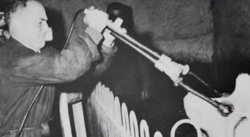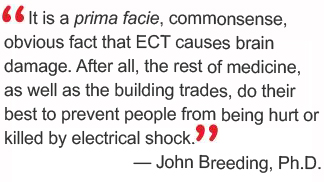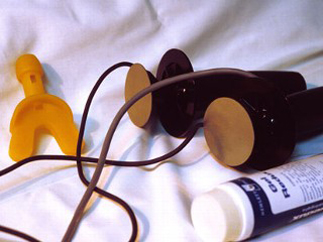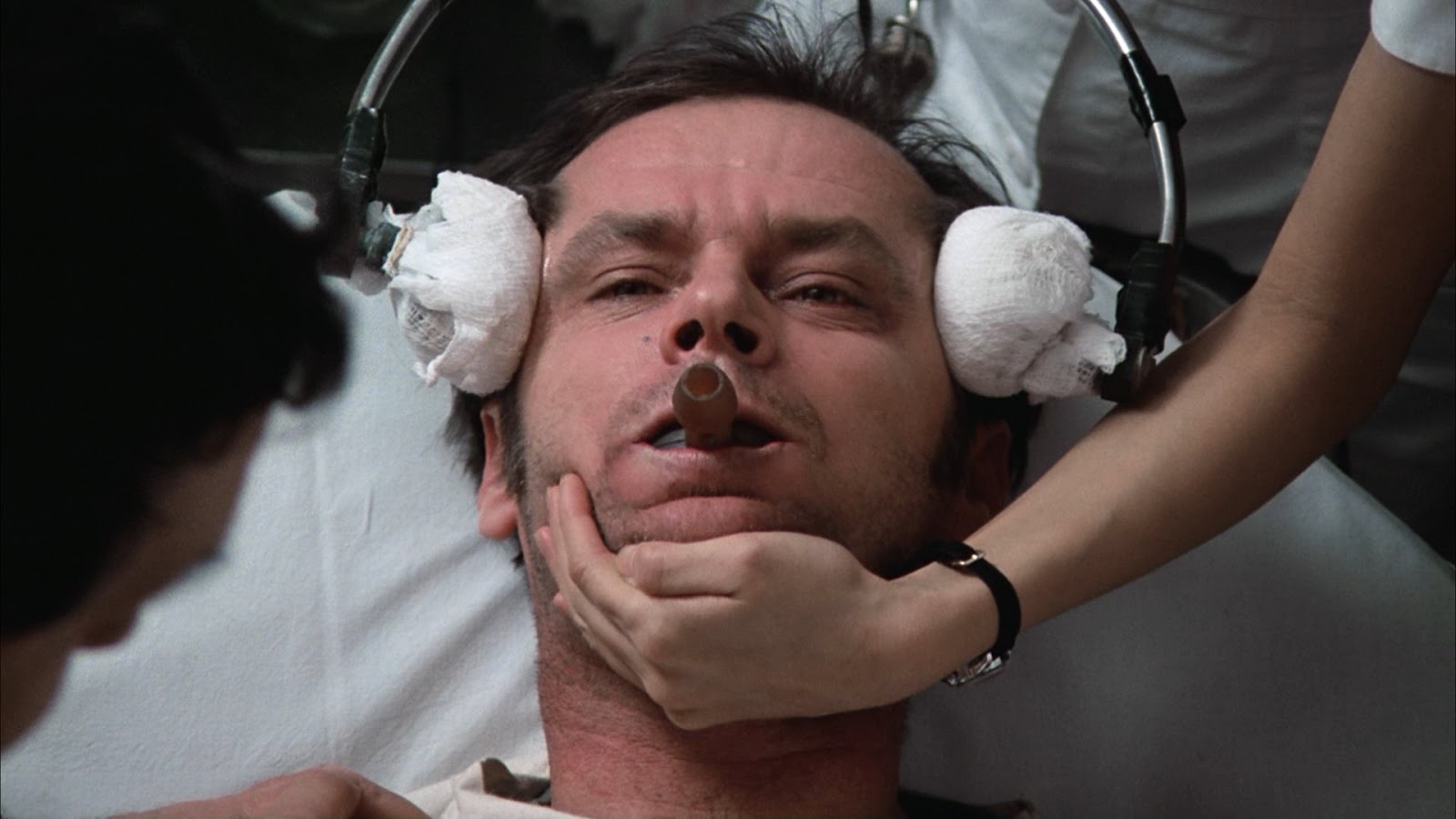How did society get to a point where causing brain damage is proposed as a viable therapy?
American Free Press
By James Spounias
April 11, 2016
If you’ve seen the riveting scene involving electroshock in Milos Forman’s famous movie, One Flew Over the Cuckoo’s Nest, you may remember Jack Nicholson violently shaking, moaning, and writhing in pain and discomfort, as if he was being given a seizure by mad scientists. Nicholson’s character lost all sense of self after being shocked. If you thought electroshock wasn’t used anymore, you’re wrong. Electroshock is still being used, but under a new name: It’s now called electroconvulsive therapy (ECT), and for the past few years it has been making a comeback.
Manufacturers of ECT devices are attempting to have them reclassified by the Food and Drug Administration (FDA)—which regulates drugs and medical devices in the United States—from Class III devices that “usually sustain or support life, are implanted, or present potential unreasonable risk of illness or injury,” to Class II, which includes, for instance, motorized wheelchairs, contact lens care products and condoms.
Critics of ECT claim that electroshock device manufacturers have never undertaken proper clinical studies to prove the devices are safe and effective, although such studies were ordered by the FDA way back in 1979.
Only those completely brainwashed by the mainstream media and medical profession would believe that a device running electrical current directly to the brain should be in the same legal regulatory category as a wheelchair. The establishment defends electroshock today as it has since the 1975 release of the blockbuster movie mentioned above.
In 1990, The New York Times blasted the film in an article noting “The Quiet Comeback of Electroshock Therapy,” stating “shock therapy has retained the tarnished image given it by Ken Kesey’s novel [One Flew Over the Cuckoo’s Nest]: dangerous, inhumane, and overused.”

In 1938, Italian psychiatrist Ugo Cerletti (above) witnessed slaughterhouse pigs being incapacitated by electric shock, making it easier for butchers to slit their throats. Inspired, Cerletti began experimenting on pigs. Then decided to try it on humans.
The technology hasn’t changed much since Italian psychiatrists in 1938 used electric shock to make pigs more docile prior to slaughter.
AMERICAN FREE PRESS spoke to John Breeding, Ph.D. who is a practicing psychologist in Austin, Texas and has been highly critical of electroshock therapy over the years. Breeding maintains the website “End of Shock” and is an activist for the Coalition to End Electroshock in Texas. He is also the author of the book, The Wildest Colts Make the Best Horses.
Even without thorough testing, we know that electroshock causes brain damage and memory loss, and may bring on cardiovascular complications, epilepsy, and, in some cases, death, according to Breeding. The medical establishment admits to death rates of one in 10,000 patients, but Breeding contends studies reveal the death rate is actually one in 200 patients. Even accepting the establishment’s number, electroshock is anything but safe.
Breeding states: “Electroshock is a psychiatric procedure that involves the production of a grand mal convulsion, similar to an epileptic seizure, by passing from 70 to upwards of 600 volts of electric current through the brain for one-half second to four seconds.”
In Cuckoo’s Nest, the public saw Jack Nicholson thrash in agony in response to shock therapy. But today, anesthetic, tranquilizing, and paralyzing drugs are used prior to ECT to minimize fear, pain, and the risk of violent muscle spasms that caused fractured bones, particularly in the spine, before the use of muscle paralyzing drugs, according to research from Breeding.
According to the Coalition to End Electroshock in Texas, the cost of a typical electroshock series for a hospitalized patient in the U.S. is between $50,000 and $75,000. Outpatient use, either in a hospital or psychiatrist’s office, runs $1,500 to $2,000 per session. Government and private insurance plans usually cover most, if not all, of the cost. Perhaps it’s not surprising that psychiatrists who specialize in electroshock often earn two to five times more per year than the average psychiatrist.
How dangerous is electroshock therapy?
It’s a controversial question because the establishment minimizes danger, arguing that the risk of danger is slight compared to the benefits. Critics strongly advocate against electroshock and note that it always causes damage to the brain. The only question is the degree of damage.
 Breeding explains: “The brain naturally operates in millivolts of electricity, and ECT administers on average between 150 and 400 volts of electricity to the brain, a force sufficient to induce a grand mal seizure, rupture the protective blood-brain barrier, and incite glutamate toxicity. Glutamate is a powerful neurotransmitter released by nerve cells in the brain and is responsible for sending signals between nerve cells. In glutamate toxicity there is too much glutamate that leads to over-excitation of the receiving nerve cell, which can cause cell damage and/or death.”
Breeding explains: “The brain naturally operates in millivolts of electricity, and ECT administers on average between 150 and 400 volts of electricity to the brain, a force sufficient to induce a grand mal seizure, rupture the protective blood-brain barrier, and incite glutamate toxicity. Glutamate is a powerful neurotransmitter released by nerve cells in the brain and is responsible for sending signals between nerve cells. In glutamate toxicity there is too much glutamate that leads to over-excitation of the receiving nerve cell, which can cause cell damage and/or death.”
The psychologist adds: “It is a prima facie, commonsense, obvious fact that ECT causes brain damage. After all, the rest of medicine, as well as the building trades, do their best to prevent people from being hurt or killed by electrical shock. People with epilepsy are given anticonvulsant drugs to prevent seizures because they are known to damage the brain. The Electroshock Quotationary, a collection of quotations, excerpts, and essays about the history and nature of electroshock, by shock survivor Leonard Roy Frank, includes the testimony of Peter Sterling, a University of Pennsylvania neuroscience professor, describing the nature of ECT-caused brain damage, dated May 31, 2001, to the New York Assembly Standing Committee on Mental Health at a public hearing on ECT. Sterling affirms the obvious: that massive amounts of electricity directly into the brain cause profound damage.”
Breeding tells AFP that autopsies and diagnostic testing often spot clearly identifiable brain damage done by electroshock.
How does the establishment justify electroshock?
Most people who end up receiving electroshock therapy suffer from severe psychological difficulties that were either never treated properly in the first place or were made worse by psychiatric pharmaceutical assault. For them, electroshock is a treatment—if it can be called that—of last resort.
This begs the question, as Breeding asks, “Do these patients truly give informed consent to electroshock?” No, Breeding contends, because they are already in a severely compromised state.
Many of those treated with ECT require further electroshock treatments because the relapse rate is extremely high and “maintenance” treatments are almost always given, according to Breeding.

Critics strongly advocate against electroshock and note that it always causes damage to the brain. The only question is the degree of damage.
There is a serious concern that if the classification of electroshock devices changes from Class III to Class II, it would be a public relations boon to promote the use of the therapy, making it more appealing to a broader number of “customers.”
Breeding notes that electroshock is promoted for severely autistic children, the elderly, and pregnant women—situations where pharmaceutical intervention is not always viable.
The current and prospective use of electroshock therapy should waken people to thelarger issue: How did society get to a point where causing brain damage is proposed as a viable therapy? Disrupting memory and one’s “spirit” as a means of managing a class of people who are largely victims of the very treatments that brought them to despair is a sorry stain on our culture and society.
We need to step back, re-examine what brought us here, look at the numerous ignored and suppressed treatments, and experience a new dawn to break ourselves of this horrific cycle.
James Spounias is the president of Carotec Inc., originally founded by renowned radio show host and alternative health expert Tom Valentine and his wife, Carole. To receive a free issue of Carotec Health Report—a monthly newsletter loaded with well-researched and reliable alternative health information—please write Carotec, P.O. Box 9919, Naples, FL 34101 or call 1-800-522-4279. Also included will be a list of the high-quality health supplements Carotec recommends.
Original article here: https://americanfreepress.net/shock-therapy-makes-a-comeback/



SHARE YOUR STORY/COMMENT